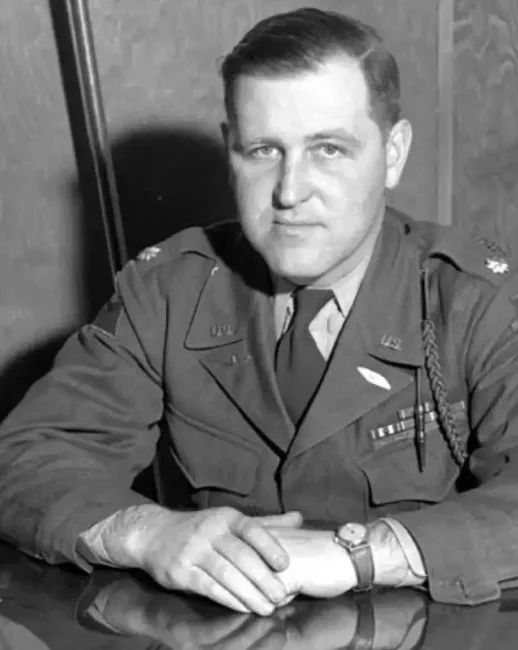- Military History
- Biographies
- Militarians Biographies
- General Creighton Williams Abrams Jr.
General Creighton Williams Abrams Jr.
U.S. general best known for his service in the late phase of American operations during the Vietnam War
Abrams was a native of Springfield, Massachusetts, and received an appointment to West Point, where he was a superb student, graduating in 1936, eighteenth in a class of 276. Commissioned a second lieutenant of cavalry, he was promoted to captain in 1940 and transferred to armor. In Europe, during World War II, he brilliantly commanded the Thirty-Seventh Tank Battalion and, at the critical Battle of the Bulge.
He led the column of Fourth Armored Division into Bastogne on December 6, 1944, relieving the 101st Airborne Division, which had been pinned down by a massive German offensive. General George S. Patton, in command of the U.S. Third Army and the master planner of the bold relief operation at Bastogne, was generous in his praise: "I'm supposed to be the best tank commander in the Army, but I have one peer - Abe Abrams." At the end of World War II, in 1945, Abrams was promoted to temporary colonel and subsequently received an appointment to the Armor School at Fort Knox, Kentucky, as its director.
After serving in this post from 1946 to 1948, he was graduated from the Command and General Staff School in 1949. His next combat service came in the Korean War, when he served successively as chief of staff for the I, X, and IX Corps from June 1950 through July 1953. Following the cease-fire in 1953, Abrams was singled out for a staff post and attended the Army War College.
After receiving a promotion to brigadier general in February 1956, Abrams was named deputy assistant chief of staff for reserve components on the Army General Staff. He was awarded a second star in May 1960 and continued to serve in various command and staff posts, including commander of the Third Armored Division from 1960 to 1962. During September 1962, through May of the following year, he was given the sensitive and difficult task of leading federal troops dispatched to Mississippi to quell riots associated with the enforcement of civil rights legislation. In the late summer of 1963, Abrams was promoted to lieutenant general and given command of V Corps in Germany. A year later, in September 1964, he received his fourth star and was named army vice chief of staff.
Creighton Abrams came to widespread public attention as the Vietnam War escalated and he was named deputy commander of the U.S. Military Assistance Command Vietnam (MACV) in May 1967. His greatest challenge came as director of operations in northern South Vietnam during the so-called Tet Offensive of January 30 through February 29, 1968. A massive Viet Cong attack on all fronts, the offensive was an attempt to steamroller South Vietnamese resistance in a single stroke.
The Tet operation was perceived by many Americans on the Home front as a defeat of South Vietnamese and U.S. forces. Indeed, the Tet Offensive added great impetus to the growing American antiwar movement. In military terms, the Tet Offensive was a costly failure for the North Vietnamese, and Abrams was named to succeed General William Westmoreland as commander of U.S. MACV. Abrams departed sharply from Westmoreland's strategy of search and destroy, adopting instead a plan of patrol and ambush that was better suited to the guerrilla nature of the conflict and was effective in disrupting the support and supply lines of the North Vietnamese forces.
Abrams served as MACV commander during the long phase of "Vietnamization" (the transfer of the burden of the war from U.S. to South Vietnamese forces), and, during the presidential administration of Richard M. Nixon, he directed the reduction of American forces in Vietnam through July 1972, when he was appointed as CSA.
He held this post until his death. In recognition of his service as a commander of armored forces, the U.S. Army named its principal battle tank, the M-1 Abrams, in his honor (1980). The IG Farben building in Germany was also named after Abrams from 1975 to 1995.
General Creighton Williams Abrams Jr. - Quick Facts
- 2nd Armored Cavalry Regiment (United States)
- 37th Armor Regiment (United States)
- 3rd Armored Division (United States)
- 4th Armored Division (United States)
- 63rd Armored Regiment (United States)
- Chief of Staff (United States Army)
- U.S. Military Assistance Command, Vietnam (MACV)
- V Corps (Fifth Corps) (United States)
- WWII (1939-1945)
- Korean War (1950-1953)
- Vietnam War (1955-1975)
- {{#owner}}
- {{#url}} {{#avatarSrc}}
{{name}} {{/url}} {{^url}} {{#avatar}} {{& avatar}} {{/avatar}} {{name}} {{/url}} - {{/owner}} {{#created}}
- {{created}} {{/created}}
























